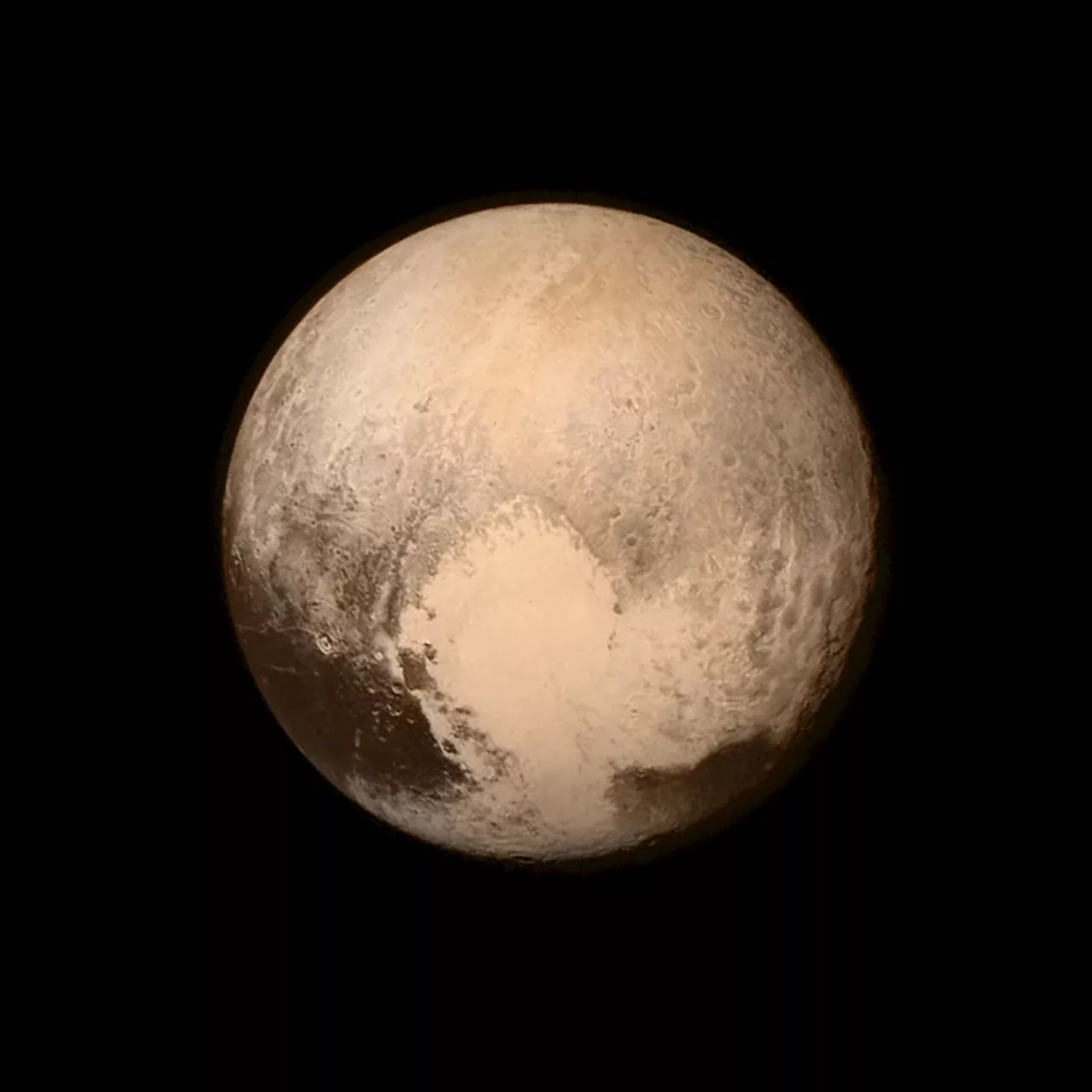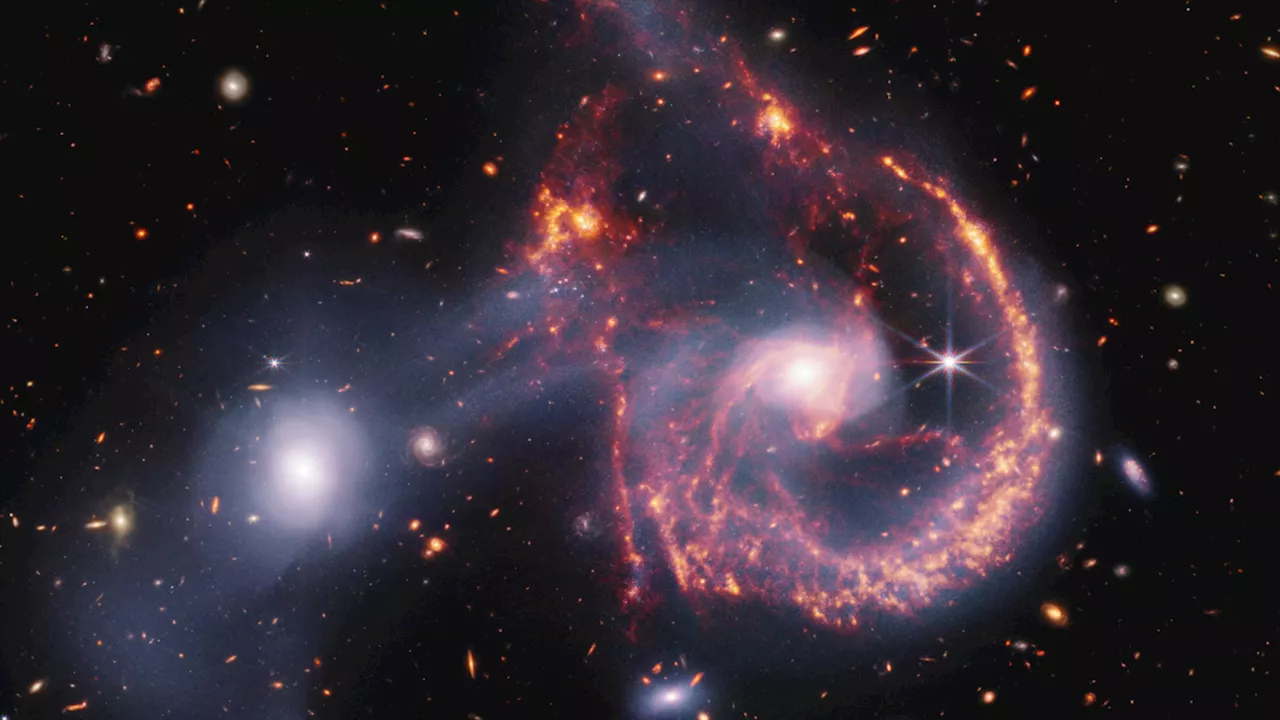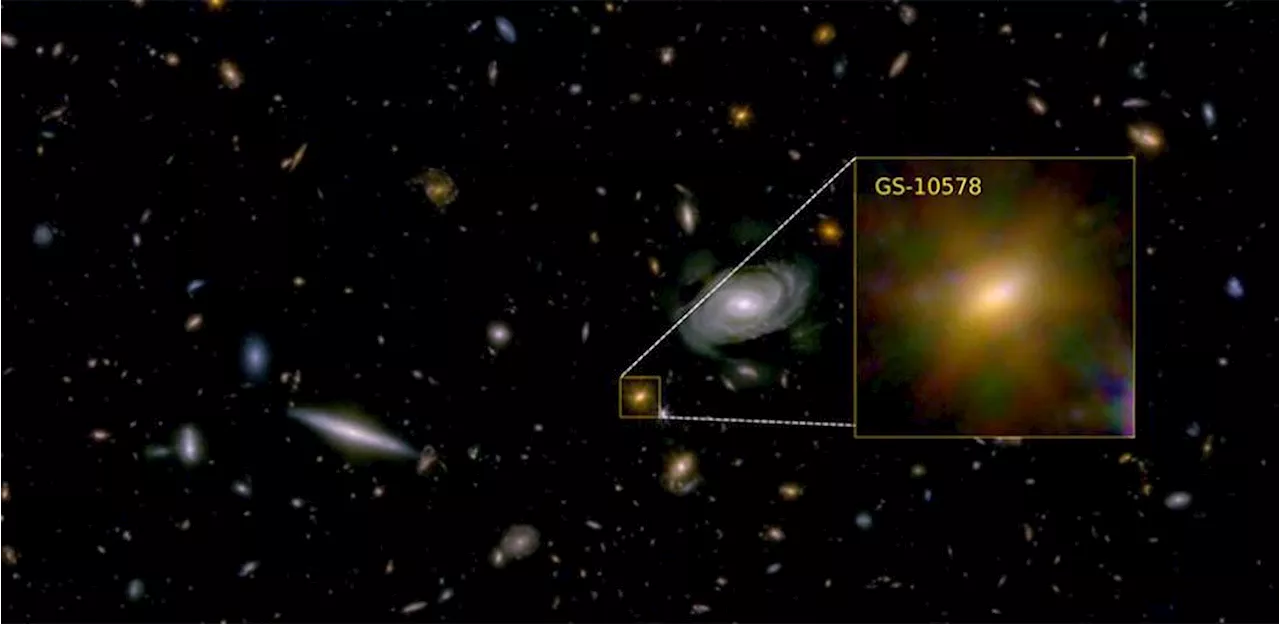Astronomers have observed the atmosphere of a hot and uniquely inflated exoplanet using NASA's James Webb Space Telescope.
Astronomers from the University of Arizona, along with an international group of researchers, observed the atmosphere of a hot and uniquely inflated exoplanet using NASA 's James Webb Space Telescope. The exoplanet, which is the size of Jupiter but only a tenth of its mass, is found to have east-west asymmetry in its atmosphere, meaning that there is a significant difference between the two edges of its atmosphere.
The exoplanet WASP-107b is tidally locked to its star. That means that the exoplanet always shows the same face to the star it is orbiting. One hemisphere of the tidally locked exoplanet perpetually faces the star it orbits, while the other hemisphere always faces away, resulting in a permanent day side and a permanent night side of the exoplanet.
The exoplanet WASP-107b is unique in that it has a very low density and relatively low gravity, resulting in an atmosphere that is more inflated than other exoplanets of its mass would be. "Traditionally, our observing techniques don't work as well for these intermediate planets, so there's been a lot of exciting open questions that we can finally start to answer," Murphy said."For example, some of our models told us that a planet like WASP-107b shouldn't have this asymmetry at all -- so we're already learning something new."
Murphy and his team have been working on the observational data they have gathered and are planning to take a much more detailed look at what's going on with the exoplanet, including additional observations, to understand what drives this asymmetry.
Astronomy Space Telescopes NASA Pluto Space Exploration Solar Flare Space Station
Philippines Latest News, Philippines Headlines
Similar News:You can also read news stories similar to this one that we have collected from other news sources.
 Pluto mission: South African astronomers join forces with NASA to learn more about the dwarf planetWhen the International Astronomical Union announced in 2006 that Pluto was being demoted from its status as the sun's ninth planet, many astronomers and non-experts alike were shocked.
Pluto mission: South African astronomers join forces with NASA to learn more about the dwarf planetWhen the International Astronomical Union announced in 2006 that Pluto was being demoted from its status as the sun's ninth planet, many astronomers and non-experts alike were shocked.
Read more »
 Astronomers detect black hole 'starving' its host galaxy to deathAstronomers have used the NASA/ESA James Webb Space Telescope to confirm that supermassive black holes can starve their host galaxies of the fuel they need to form new stars.
Astronomers detect black hole 'starving' its host galaxy to deathAstronomers have used the NASA/ESA James Webb Space Telescope to confirm that supermassive black holes can starve their host galaxies of the fuel they need to form new stars.
Read more »
 Astronomers catch a glimpse of a uniquely inflated and asymmetric exoplanetAn international group of researchers including University of Arizona astronomers, using NASA's James Webb Space Telescope, has observed the atmosphere of a hot and uniquely inflated exoplanet.
Astronomers catch a glimpse of a uniquely inflated and asymmetric exoplanetAn international group of researchers including University of Arizona astronomers, using NASA's James Webb Space Telescope, has observed the atmosphere of a hot and uniquely inflated exoplanet.
Read more »
 James Webb Space Telescope witnesses a 'smiling' galactic collision (images)Robert Lea is a science journalist in the U.K. whose articles have been published in Physics World, New Scientist, Astronomy Magazine, All About Space, Newsweek and ZME Science. He also writes about science communication for Elsevier and the European Journal of Physics. Rob holds a bachelor of science degree in physics and astronomy from the U.K.
James Webb Space Telescope witnesses a 'smiling' galactic collision (images)Robert Lea is a science journalist in the U.K. whose articles have been published in Physics World, New Scientist, Astronomy Magazine, All About Space, Newsweek and ZME Science. He also writes about science communication for Elsevier and the European Journal of Physics. Rob holds a bachelor of science degree in physics and astronomy from the U.K.
Read more »
 James Webb Telescope Reveals Supermassive Black Hole Starving Early GalaxyAstronomers using the James Webb Space Telescope have confirmed that supermassive black holes can starve their host galaxies of fuel needed for star formation. Studying a quiescent galaxy nicknamed 'Pablo's Galaxy,' they discovered that the central supermassive black hole is disrupting the supply of cold gas necessary for star creation, effectively keeping the galaxy dormant.
James Webb Telescope Reveals Supermassive Black Hole Starving Early GalaxyAstronomers using the James Webb Space Telescope have confirmed that supermassive black holes can starve their host galaxies of fuel needed for star formation. Studying a quiescent galaxy nicknamed 'Pablo's Galaxy,' they discovered that the central supermassive black hole is disrupting the supply of cold gas necessary for star creation, effectively keeping the galaxy dormant.
Read more »
 Monster black hole is starving its host galaxy to death, James Webb telescope revealsBen Turner is a U.K. based staff writer at Live Science. He covers physics and astronomy, among other topics like tech and climate change. He graduated from University College London with a degree in particle physics before training as a journalist.
Monster black hole is starving its host galaxy to death, James Webb telescope revealsBen Turner is a U.K. based staff writer at Live Science. He covers physics and astronomy, among other topics like tech and climate change. He graduated from University College London with a degree in particle physics before training as a journalist.
Read more »
